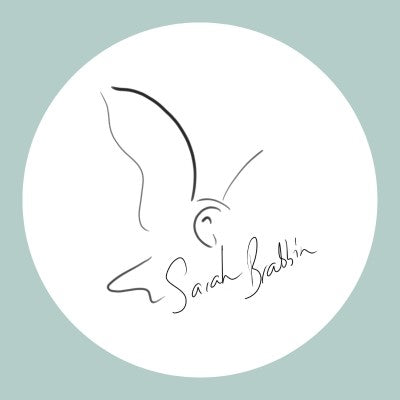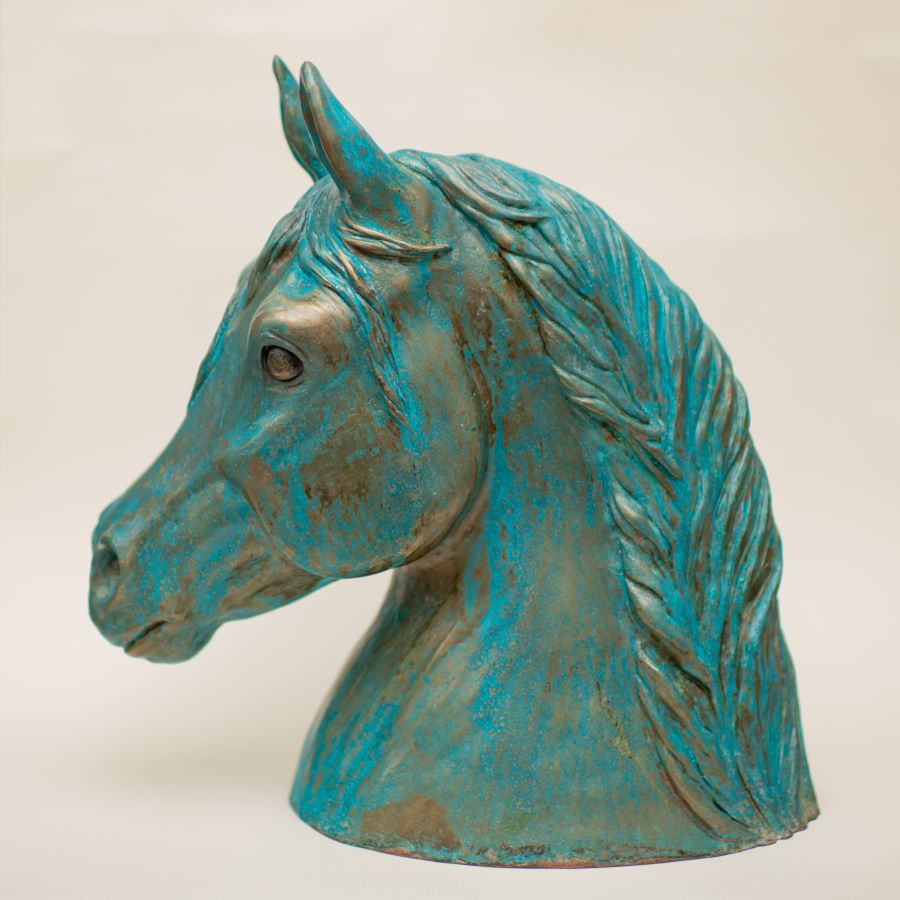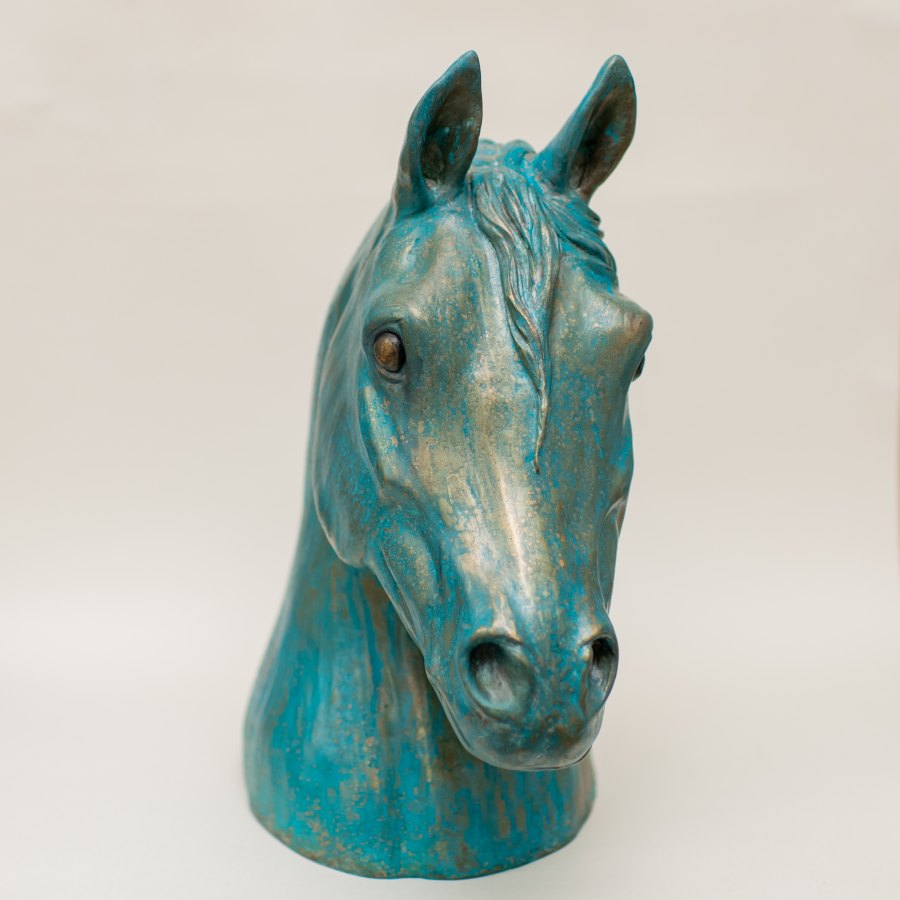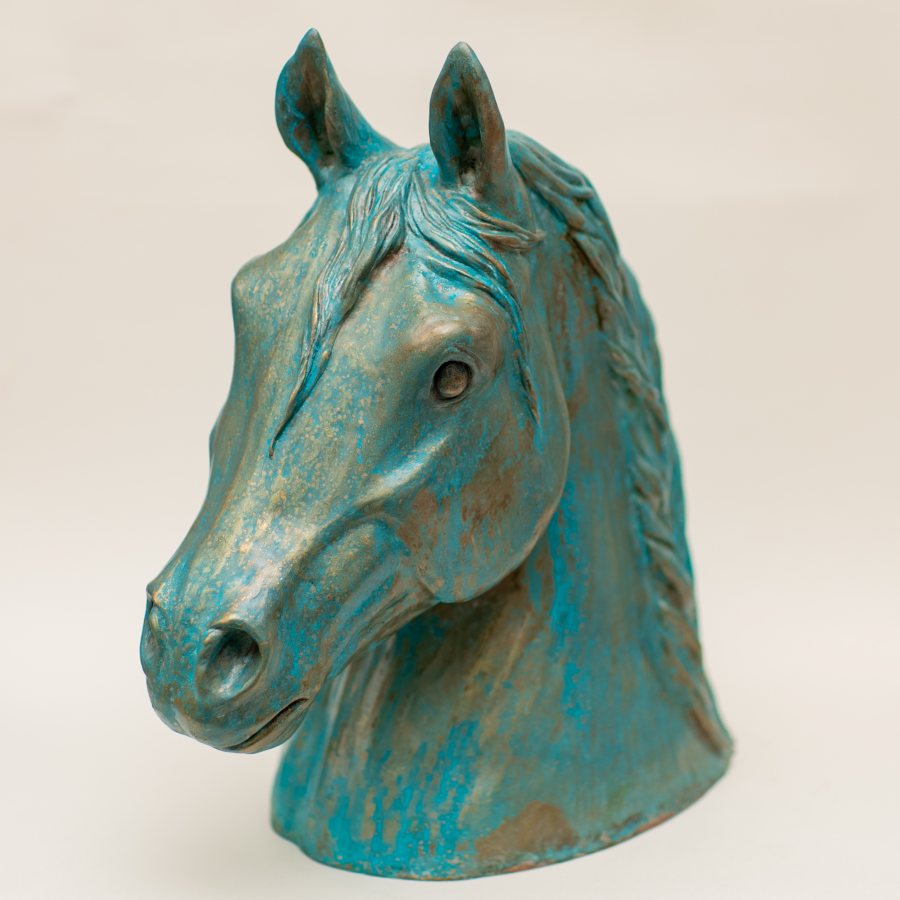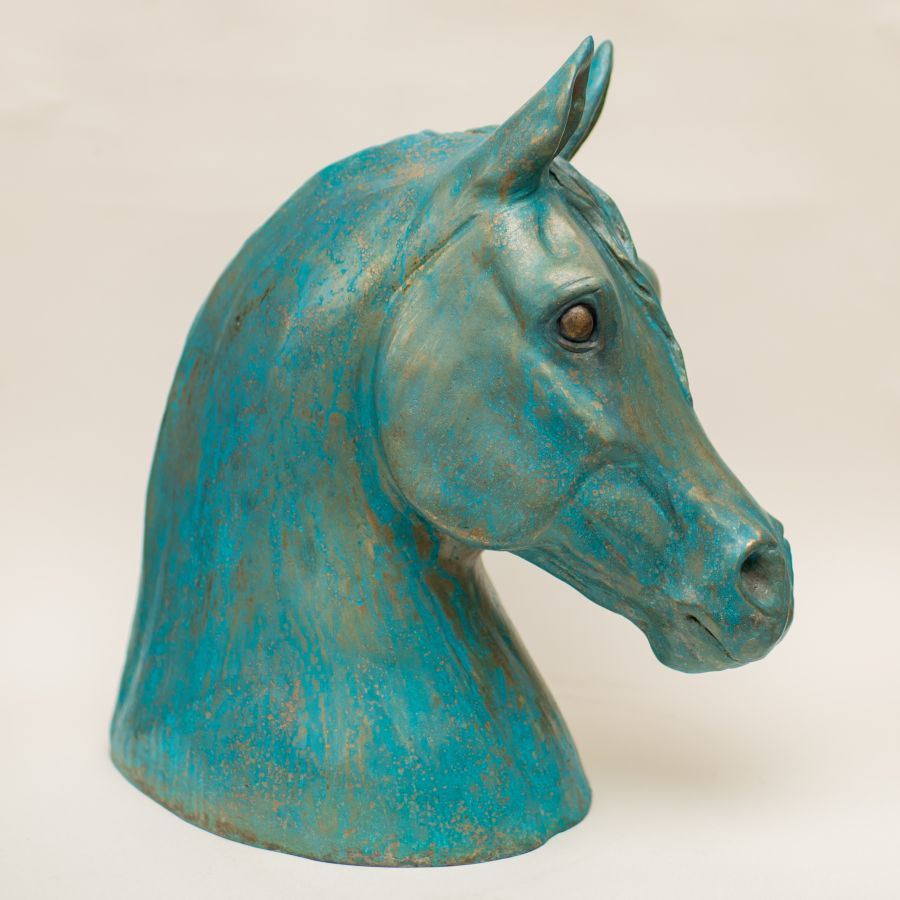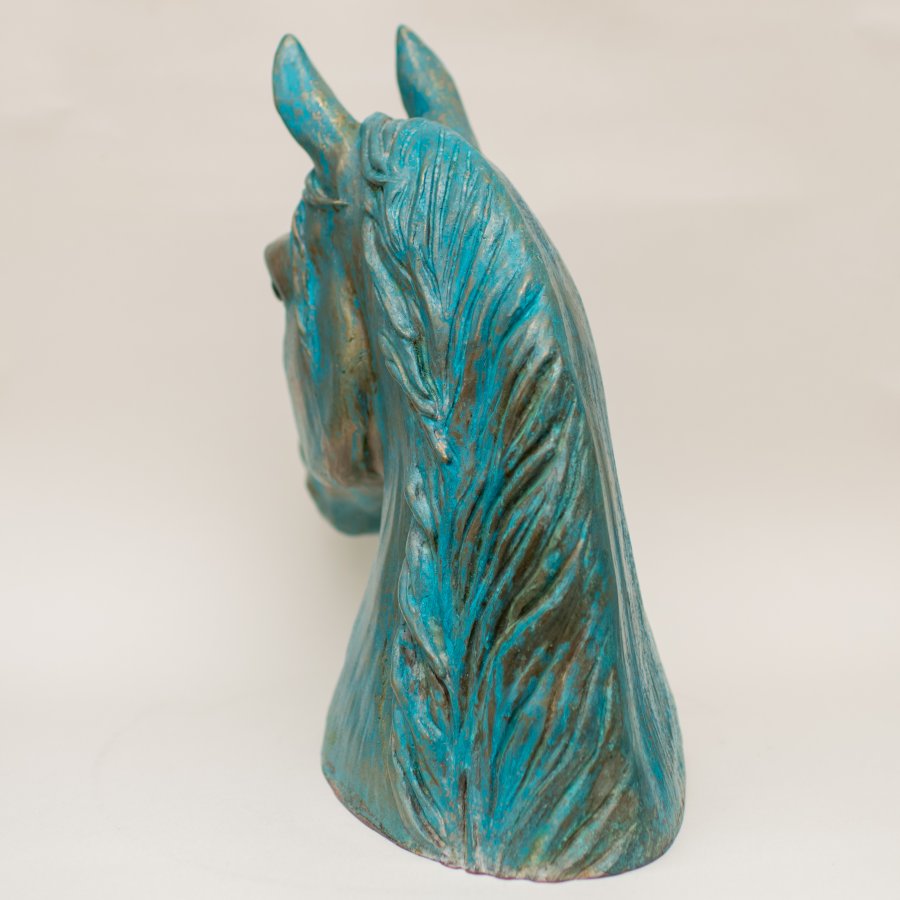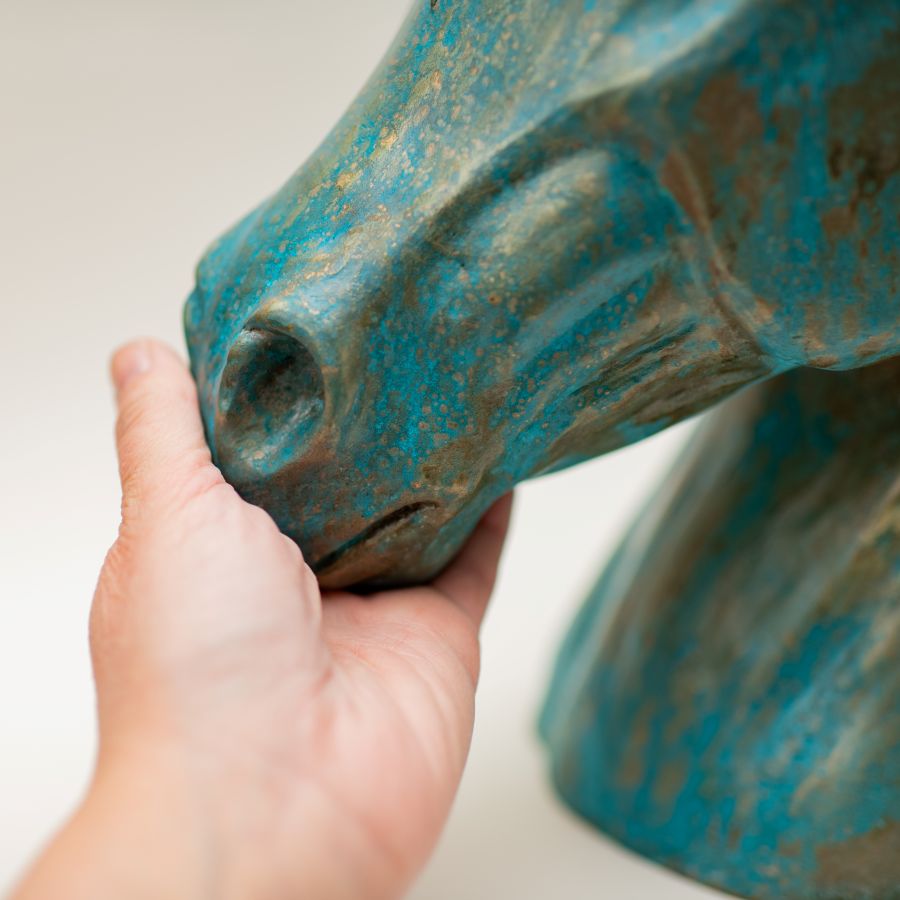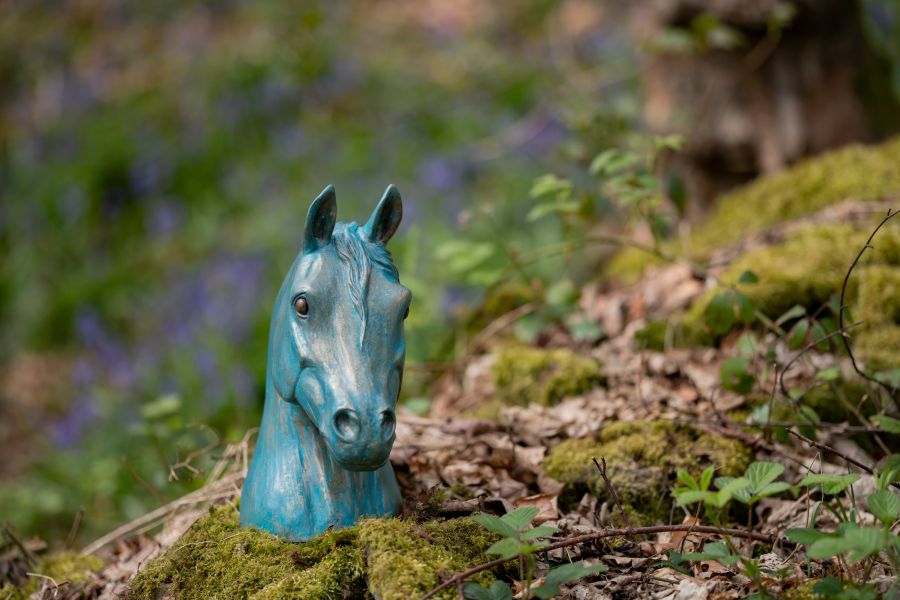Large Bronze Horse Head Sculpture

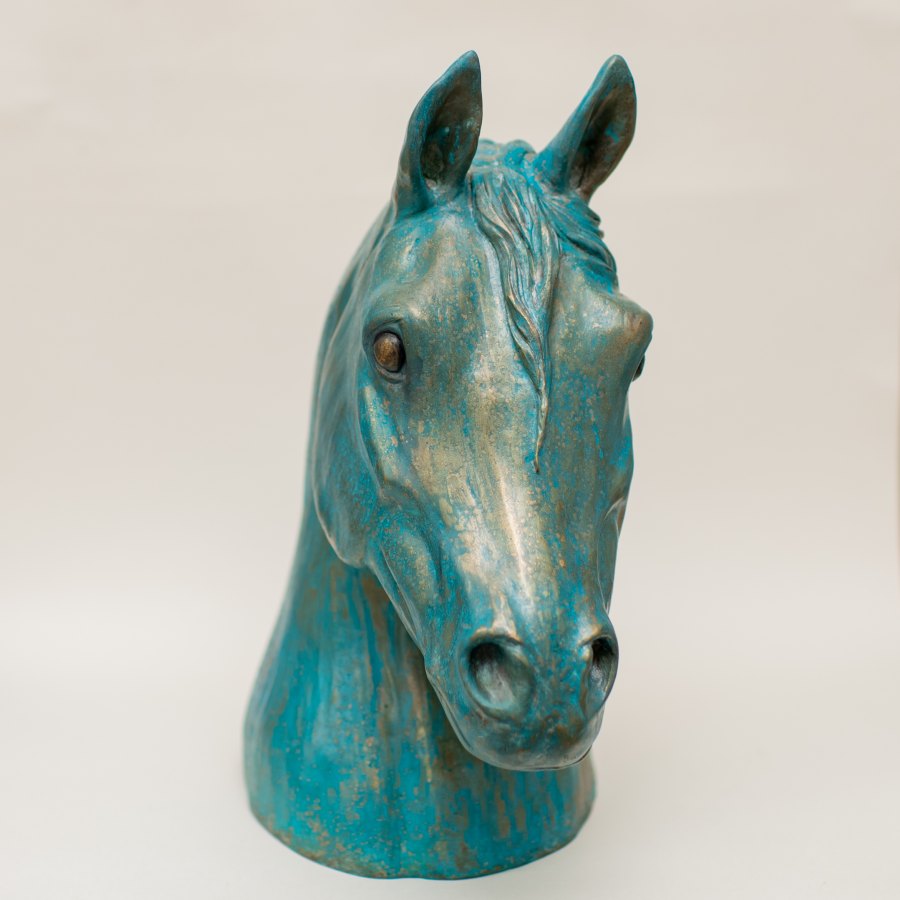
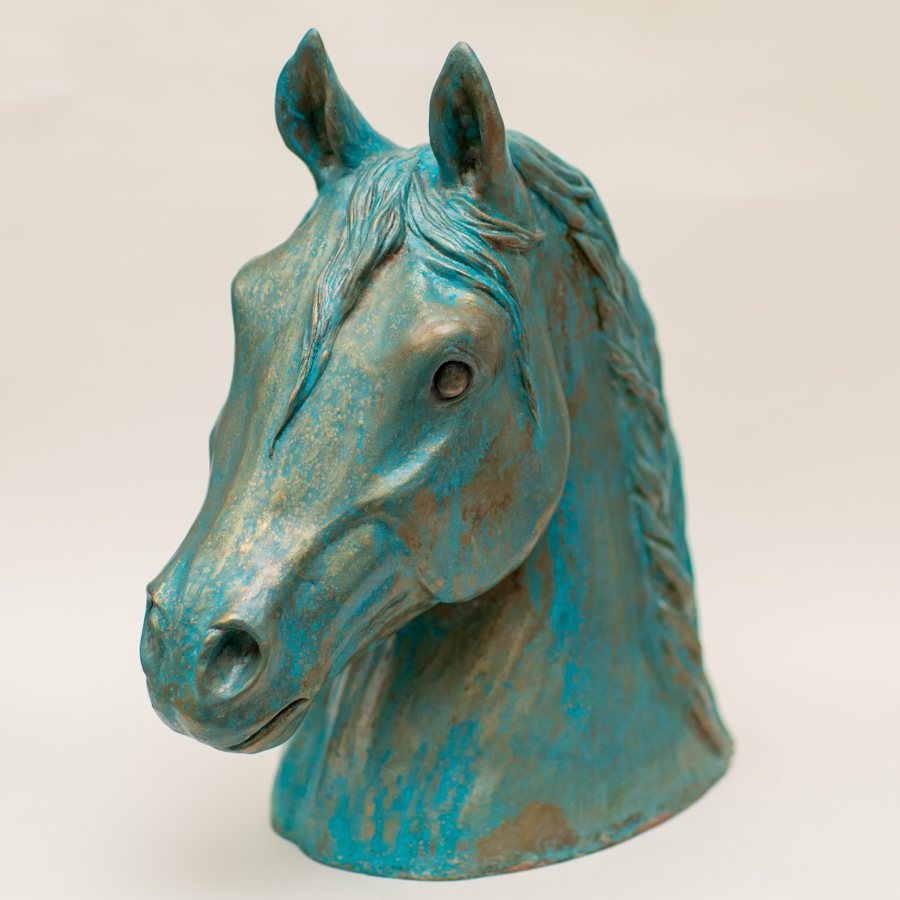
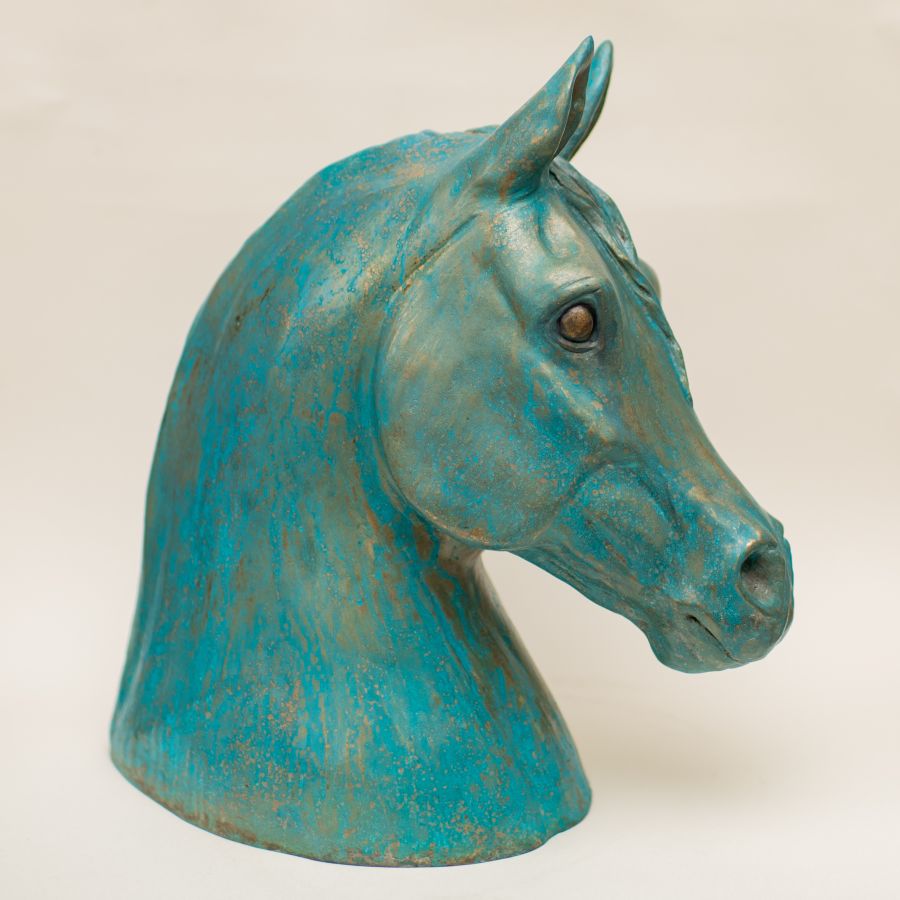

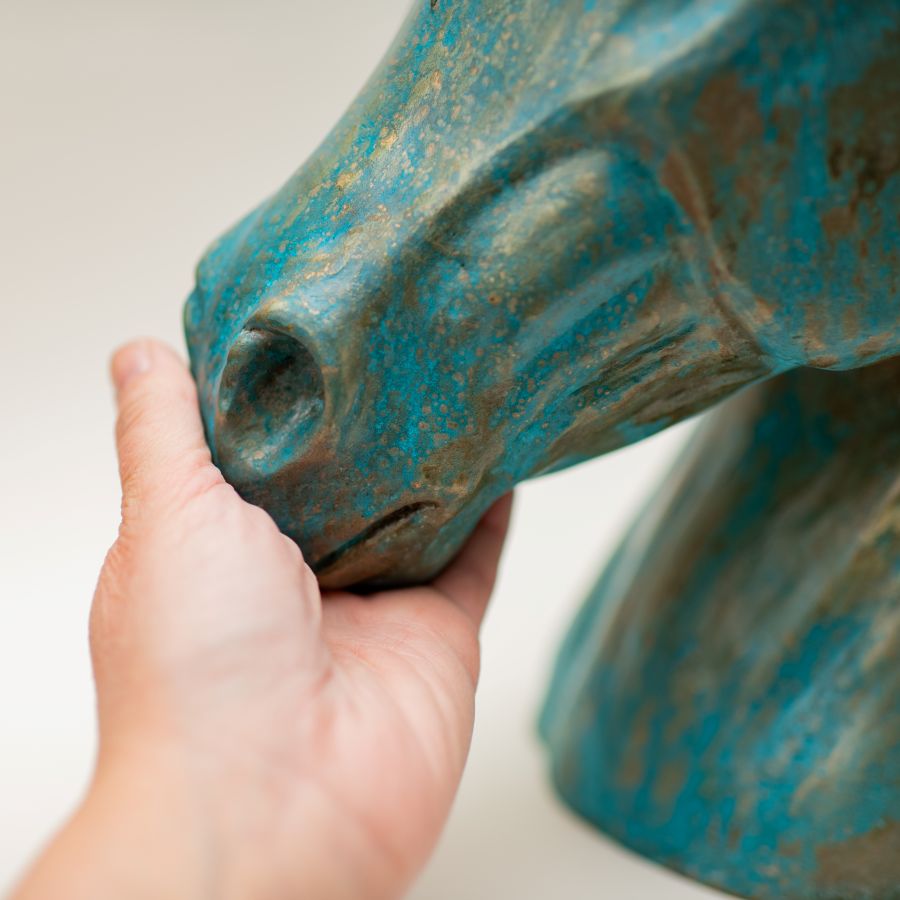
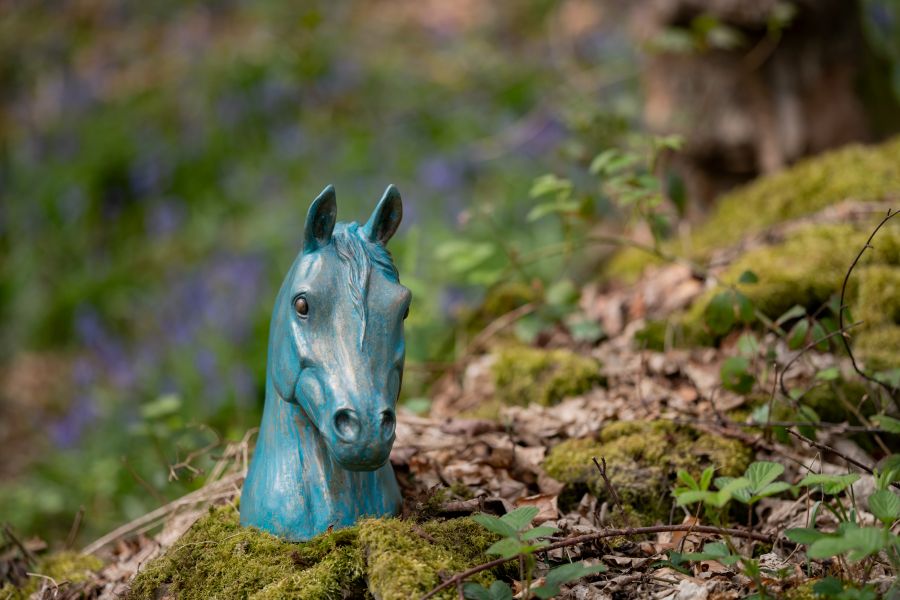
How the foundry cast bronzes are made: Watch the process video
Bronze Guide
Collapsible row
What is bronze?
Let’s start with the basics: What exactly is bronze?
Bronze is a metal alloy mostly made up of copper. Mass-produced
bronzes often skimp on the copper content and use tin, lead, and iron
instead which leave the sculptures open to corrosion and breakages.
The bronze I use for my sculptures contain a high copper content of
96%, along with 1% manganese and 3% silicon. The added silicon
strengthens the sculptures, although it makes the process more
challenging and costly for the foundry.
The difference between hot and cold cast
Hot or cold?
Cold cast bronze refers to sculptures made with resin and moulds, sometimes finished with bronze powder to mimic the look of a genuine bronze sculpture.
Hot cast Bronze involves creating a mold from the original sculpture, followed by the creation of a wax copy. The wax piece is then dipped multiple times in a ceramic coating, creating a sturdy shell. This is
then heated in a kiln to melt the wax. Molten bronze can then be poured into the ceramic shell.
Once cooled, the ceramic shell is removed, and the sculpture is assembled and perfected. The finishing touches involve
patination to create beautiful surfaces, followed by a seal of hot wax that gives the sculpture its sheen and protects the surface from the elements.
Provenance
Limited editions.
The number of pieces in an edition directly impacts their exclusivity and value.
Higher edition numbers indicate less exclusivity, while lower numbers make each piece more sought after.
But that’s not all! Provenance matters too.
Can you trace the sculpture’s journey from the artist to your hands?
Look for sculptures made in the UK by reputable foundries, as they proudly put their name to their work. And for your peace of mind and future valuation, you’ll receive a signed certificate of authentication
alongside your bronze sculpture.
Caring for your bronze
Caring for your bronze
A wipe over with a clean, soft, dry cloth is all that’s needed unless the bronze is kept outside when it will need wax applying at least once a year to keep the elements off it and it looking like it should.
Left to the elements the surface will develop into a green effect which is also rather nice.
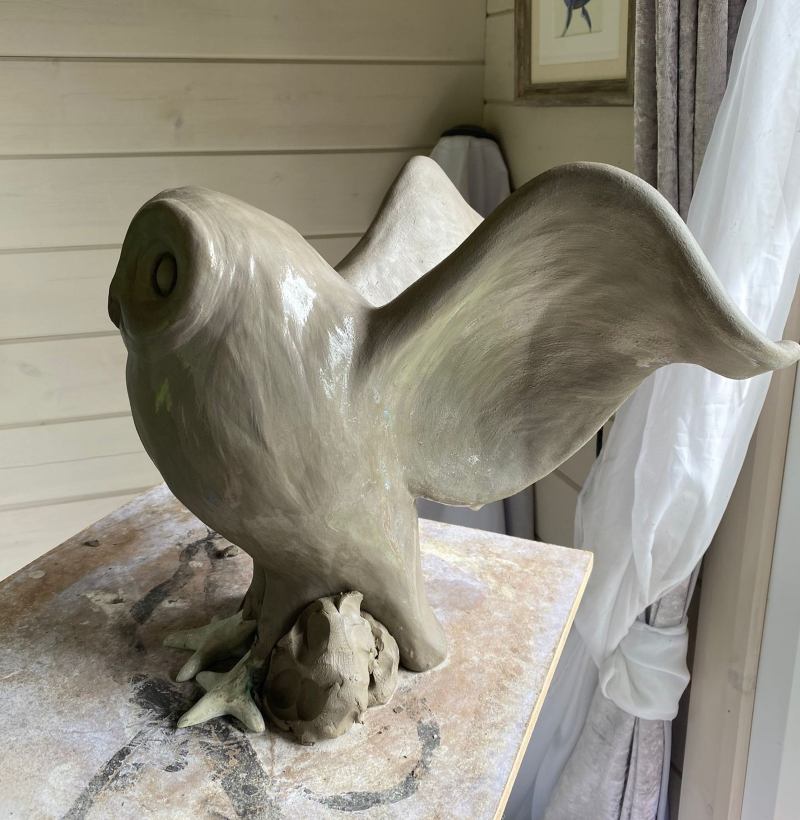
Born from clay
All of my sculptures are hand sculpted from clay.
The bronzes are made in the same labour-intensive way whether they're big or small.
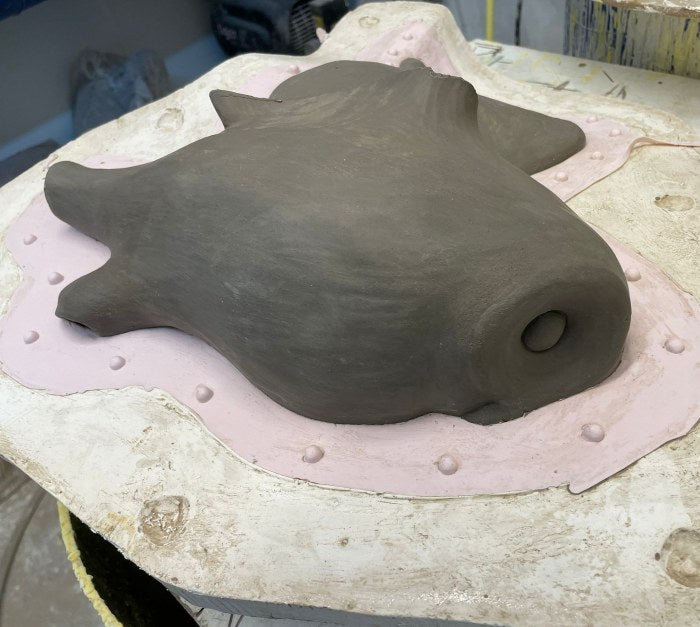
Mould Making
A plaster and then silicon mould are made from the clay master.
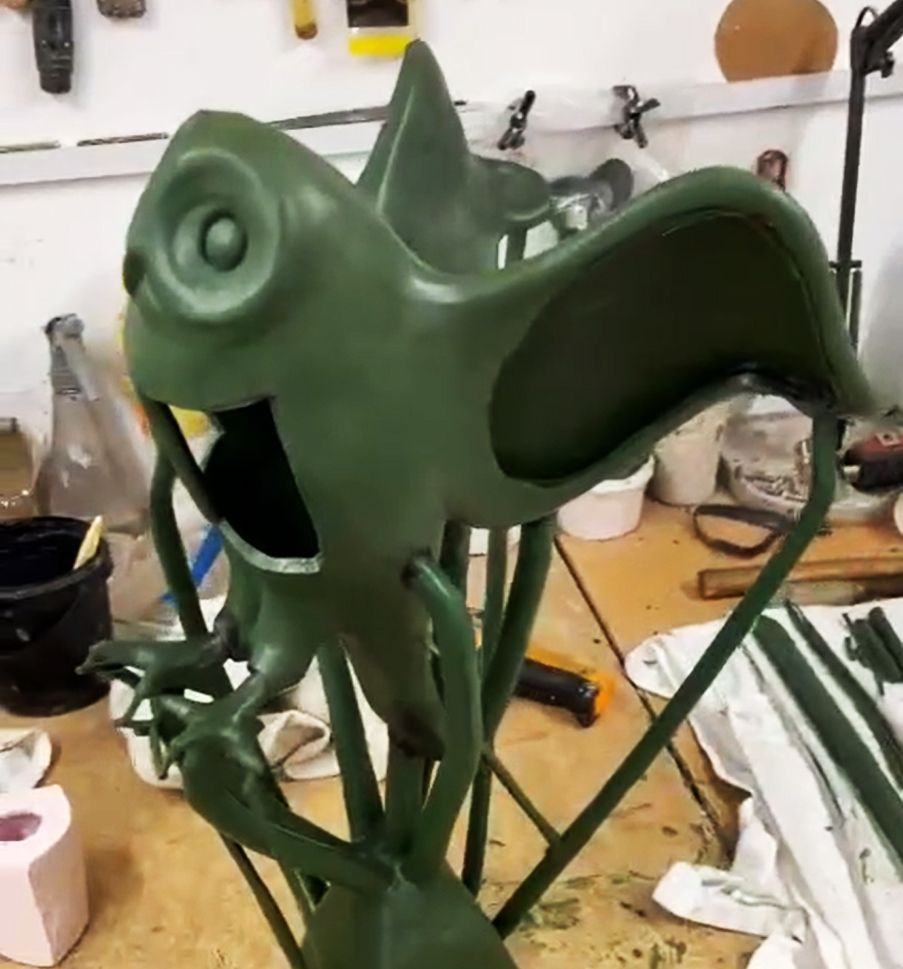
Wax Copy
Molten wax is poured into the silicon and plaster mould to create an exact wax copy of the clay sculpture.
The wax copy needs assembling and fettling by hand.
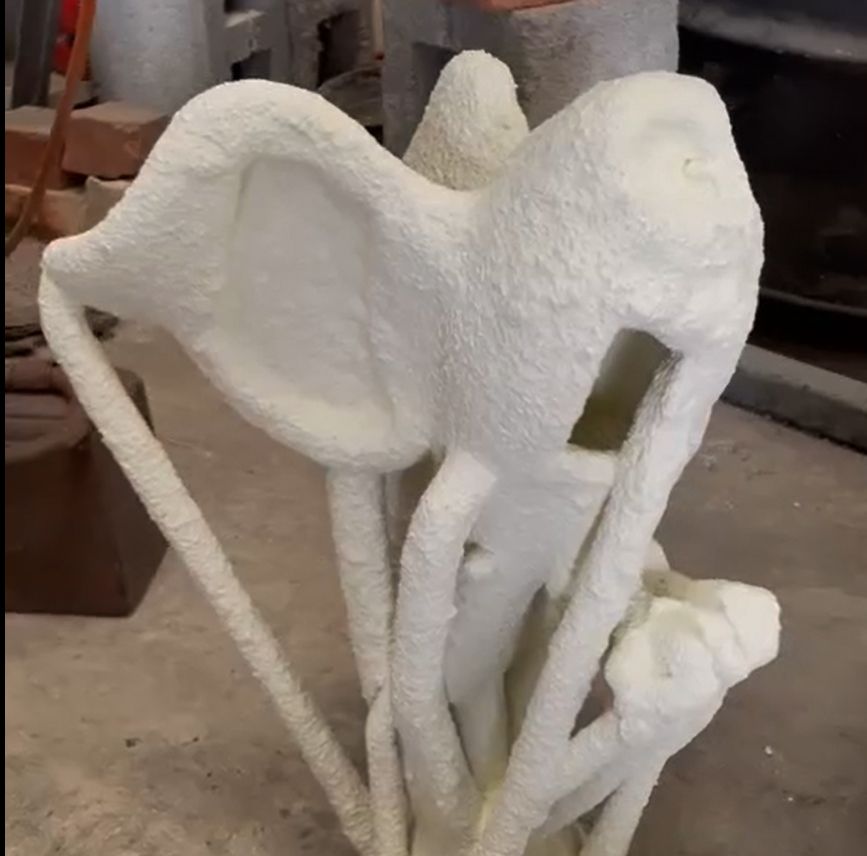
Ceramic Shell
The wax copy is then coated in a ceramic coating before being put in the furnace to allow the wax to melt and the ceramic shell to harden, leaving a double walled mould.

Bronze Casting
The ceramic shell is warmed in the furnace to aid flow as the molten bronze is poured.
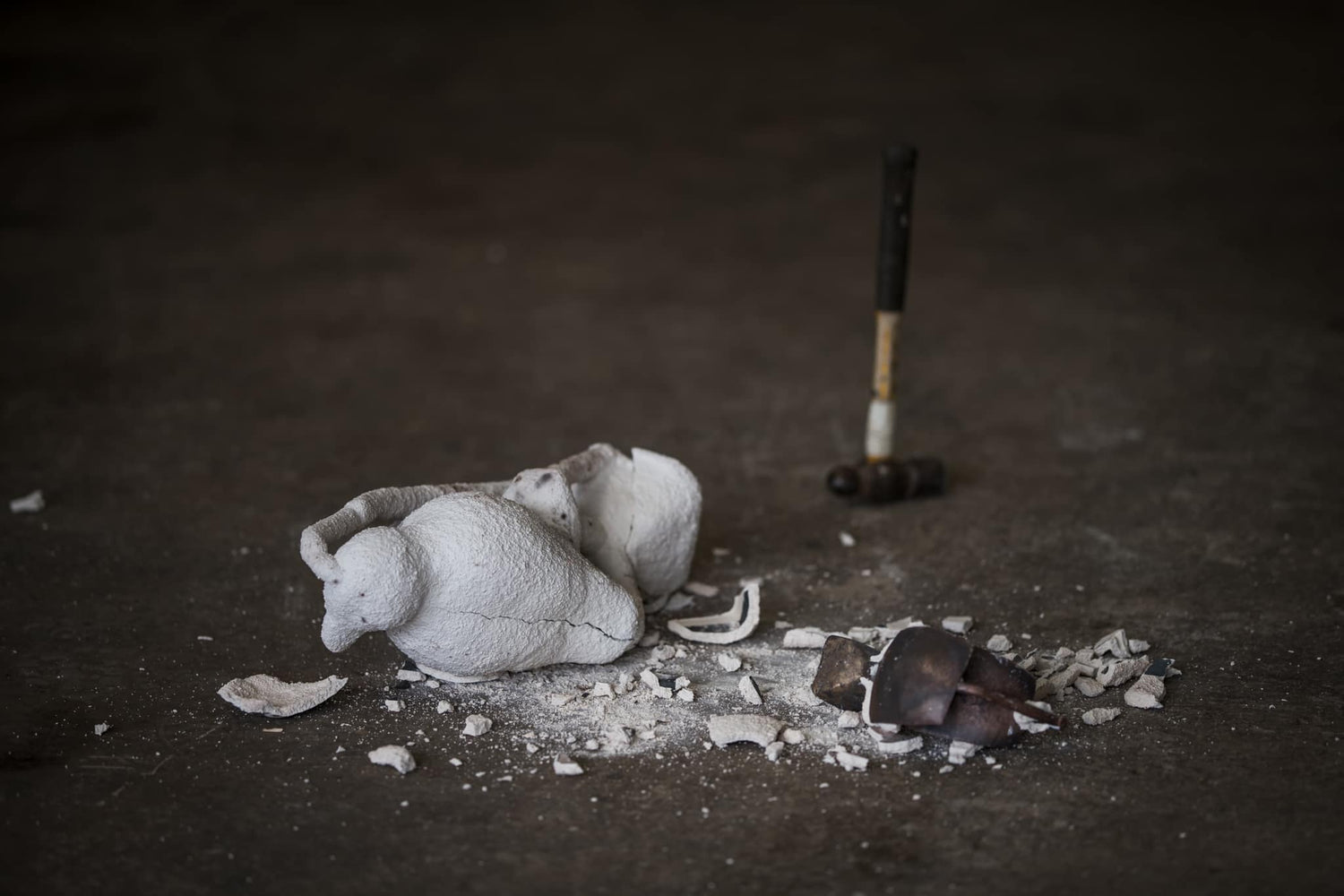
Removing the Shell
Once cool, the ceramic shell is carefully removed.
The pieces of the sculpture are welded together and then it's time to hand finish and fettle it.
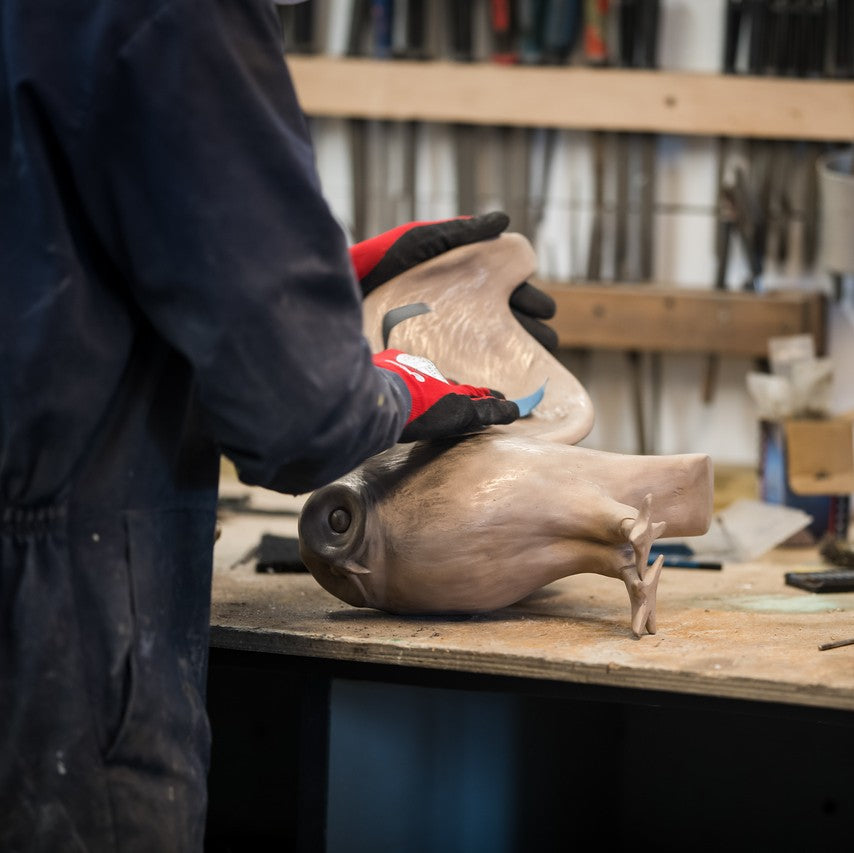
Welding & Fettling
The pieces of the sculpture are welded together and then it's time to hand finish and fettle it. It's an incredibly labour-intensive process.
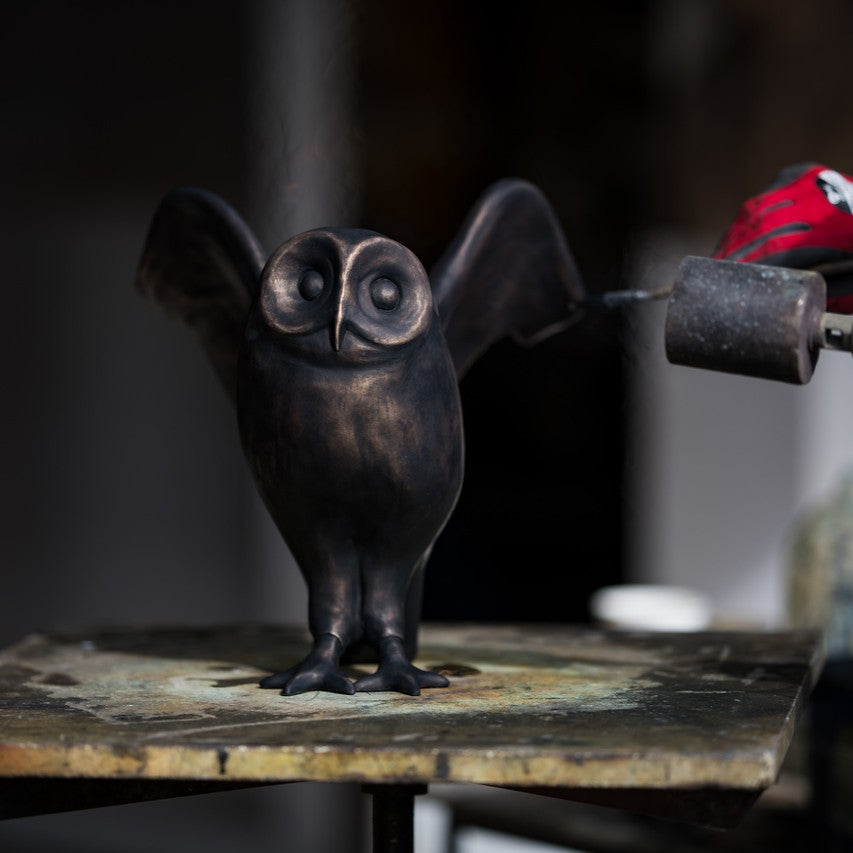
Patination
A combination of heat and chemicals is painted on to the bronze to create different colours (the patina).
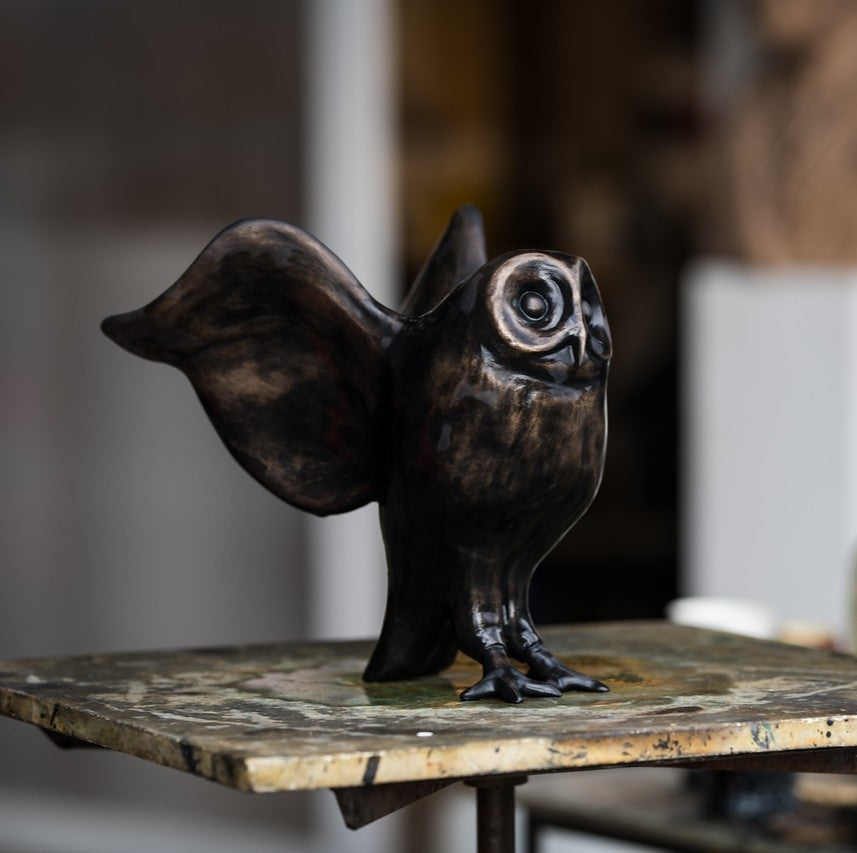
Waxing, Sealing & Polishing
The piece is then given a good coating of lacquer or wax which is what protects the patina. Wax is gently buffed to a sheen and they’re ready for their new owner.
